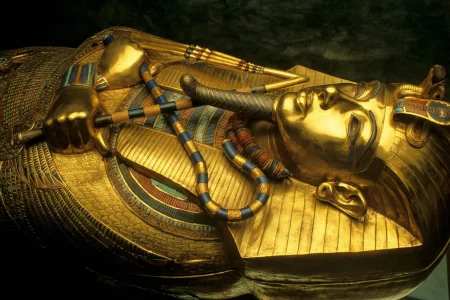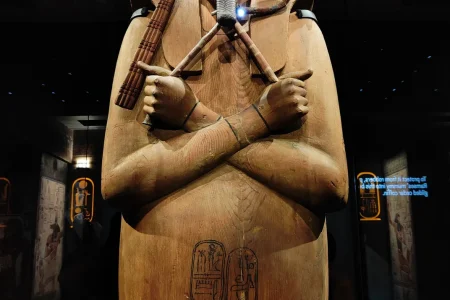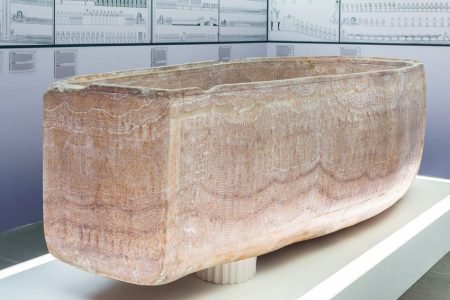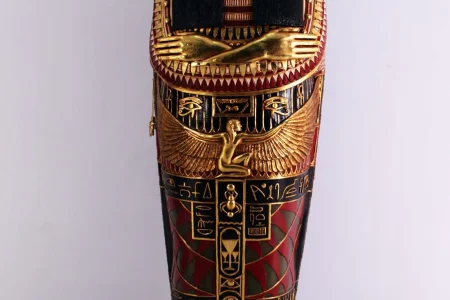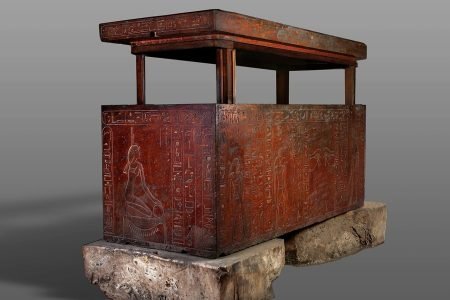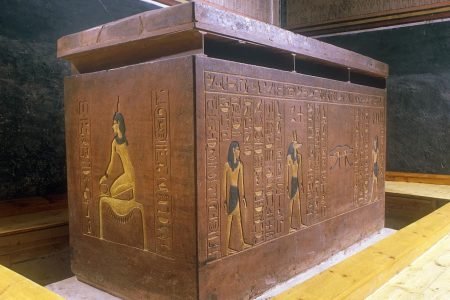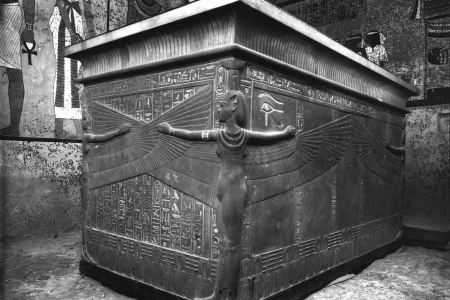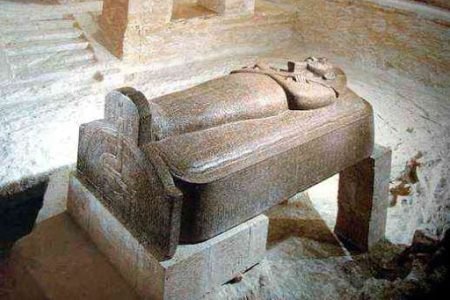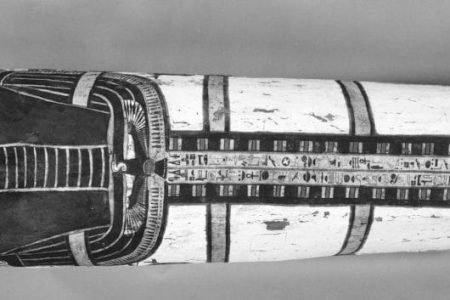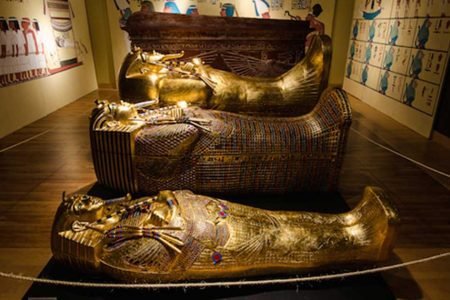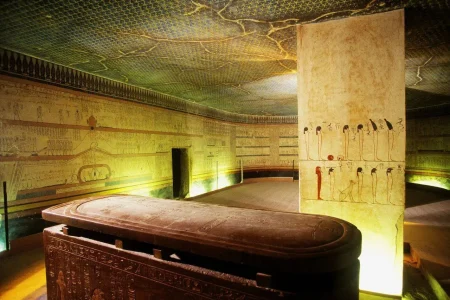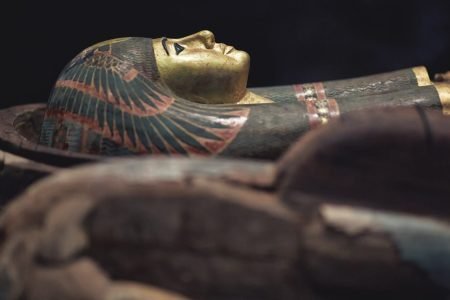Egyptian tombs and sarcophagi are an essential part of the ancient Egyptian legacy, reflecting the profound spiritual beliefs, artistic excellence, and opulence of the Pharaohs. Over the centuries, many famous sarcophagi have been unearthed, providing valuable insights into Egypt’s rich cultural and religious history. The design and materials used in these tombs were not just for burial purposes, but also served to honor the deceased, ensuring their safe passage into the afterlife. From the golden sarcophagus of Tutankhamun to the elaborate designs of Ramses II, the sarcophagi of Egypt are a testament to the grandeur of this ancient civilization. Below is a detailed look at some of the most famous and significant sarcophagi discovered in Egypt.
- Egypt Tour Magic
- Egypt Tour Packages
- Excursions in Egypt
- Cairo Tours and Excursions
- Hurghada Tours and Excursions
- Soma Bay Tours and Excursions
- Makadi Bay Tours and Excursions
- Sahl Hasheesh Tours and Excursions
- El Gouna Tours and Excursions
- Marsa Alam Tours and Excursions
- Port Ghalib Tours and Excursions
- El Quseir Tours and Excursions
- Dendera and Abydos Day Tours
- Aswan Tours and Excursions
- Luxor Tours and Excursions
- Alexandria Tours and Excursions
- Sharm El Sheikh Tours and Excursions
- Top Rated Tours in 2025
- Optional Excursions in Egypt
- Private Transfer
- Blogs About egypt
- Ancient Egypt
- What You Need To know Before Your First Trip To Egypt
- Best Places to Visit in Egypt 2025
- Top Attractions in Red Sea Resorts 2025
- Top 10 Tourist Activities in Egypt
- Top 30 Activities You Can’t Miss in Egypt
- The Guide to Guided Tours in Egypt
- Egypt’s Ancient and Modern History
- The Nile River
- The Deserts of Egypt
- Historical Sites in Egypt
- Cairo
- Alexandria
- Luxor
- Aswan
- The Red Sea
- Dendera Temple
- El Fayoum Oasis
- Bahariya Oasis
- Siwa Oasis
- Al Alamein
- Marsa Matruh
- Ancient Egyptian gods
- famous Egyptian dishes
- UNESCO World Heritage sites
- About Us
- Why Egypt Tour Magic
- Egypt Tour Magic
- Egypt Tour Packages
- Excursions in Egypt
- Cairo Tours and Excursions
- Hurghada Tours and Excursions
- Soma Bay Tours and Excursions
- Makadi Bay Tours and Excursions
- Sahl Hasheesh Tours and Excursions
- El Gouna Tours and Excursions
- Marsa Alam Tours and Excursions
- Port Ghalib Tours and Excursions
- El Quseir Tours and Excursions
- Dendera and Abydos Day Tours
- Aswan Tours and Excursions
- Luxor Tours and Excursions
- Alexandria Tours and Excursions
- Sharm El Sheikh Tours and Excursions
- Top Rated Tours in 2025
- Optional Excursions in Egypt
- Private Transfer
- Blogs About egypt
- Ancient Egypt
- What You Need To know Before Your First Trip To Egypt
- Best Places to Visit in Egypt 2025
- Top Attractions in Red Sea Resorts 2025
- Top 10 Tourist Activities in Egypt
- Top 30 Activities You Can’t Miss in Egypt
- The Guide to Guided Tours in Egypt
- Egypt’s Ancient and Modern History
- The Nile River
- The Deserts of Egypt
- Historical Sites in Egypt
- Cairo
- Alexandria
- Luxor
- Aswan
- The Red Sea
- Dendera Temple
- El Fayoum Oasis
- Bahariya Oasis
- Siwa Oasis
- Al Alamein
- Marsa Matruh
- Ancient Egyptian gods
- famous Egyptian dishes
- UNESCO World Heritage sites
- About Us
- Why Egypt Tour Magic
The Most Famous Sarcophagi of Ancient Egypt
1. Tutankhamun's Sarcophagus (Pure Gold)
Tutankhamun’s sarcophagus is arguably one of the most famous in the history of ancient Egypt, discovered in 1922 in the Valley of the Kings in Luxor. This sarcophagus is made of pure gold and weighs around 110 kilograms. The intricate carvings on the sarcophagus depict the young king in various poses, highlighting his royal status and the Egyptian religious iconography of the time. Inside the sarcophagus, the mummy of Tutankhamun was found along with an array of treasures, including a golden mask that has become an iconic symbol of ancient Egypt
2. Ramesses II's Sarcophagus (Ramesses the Great)
The sarcophagus of Ramesses II, also known as “Ramesses the Great,” is one of the most notable royal sarcophagi in Egyptian history. Found in his tomb in the Valley of the Kings, the sarcophagus is large and intricately decorated with scenes from Egyptian mythology and religion. Ramesses II ruled Egypt for 66 years and is known for his military conquests and monumental building projects. The sarcophagus reflects the grandeur of his reign and his importance in ancient Egyptian society
3. Seti I's Sarcophagus
Seti I’s sarcophagus, located in the Valley of the Kings, belongs to the 19th Dynasty. This sarcophagus is renowned for its fine workmanship, featuring detailed carvings of Seti I in religious and ceremonial scenes. As one of Egypt’s great Pharaohs, Seti I was a powerful ruler who expanded the empire and reestablished order following the collapse of the Middle Kingdom. The intricate carvings on his sarcophagus depict him in the presence of gods and emphasize his divine connection
4. Nefertiti's Sarcophagus
Although a complete sarcophagus of Queen Nefertiti has not been discovered, fragments of it have been found, most notably in the tomb of her husband, Akhenaten. Nefertiti was a prominent queen known for her beauty and influence during the Amarna Period. The fragments of her sarcophagus reveal her importance in Egyptian society and the artistic style that flourished during her time. The depictions on these fragments show Nefertiti in ceremonial settings, reinforcing her powerful role in the Egyptian court.
5. Hatshepsut's Sarcophagus
Queen Hatshepsut’s sarcophagus, discovered in the Deir el-Bahari temple in Luxor, is one of the most remarkable royal sarcophagi of ancient Egypt. Hatshepsut, one of Egypt’s most successful and influential female pharaohs, ruled during the 18th Dynasty and oversaw a period of peace, prosperity, and architectural innovation. Her sarcophagus features beautiful carvings that depict her as both a king and a woman, symbolizing her dual role in society. The sarcophagus reflects the art and design sensibilities of the time, showcasing Egypt’s craftsmanship.
6. Amenhotep II's Sarcophagus
The sarcophagus of Amenhotep II, discovered in the Valley of the Kings, belongs to the 18th Dynasty. Amenhotep II was known for his military exploits and his ability to maintain Egyptian dominance in the region. The sarcophagus features detailed carvings that highlight the king’s connection to the divine and his status as a ruler. Scenes on the sarcophagus depict Amenhotep II in interaction with gods, emphasizing the importance of religion in the king’s life and the afterlife.
7. Tutankhamun’s Granite Sarcophagus
In addition to the famous golden sarcophagus, a granite sarcophagus belonging to King Tutankhamun was also discovered in his tomb. This granite sarcophagus offers a different, yet equally impressive, view of the artistic styles of the time. It features intricate carvings that portray Tutankhamun and various gods, reflecting the religious beliefs and artistic preferences of the 18th Dynasty. Despite being overshadowed by the gold sarcophagus, the granite one provides an additional layer of historical understanding of the young king’s reign.
8. King Narmer (Mena) Sarcophagus
The sarcophagus of King Narmer, also known as Mena, is one of the oldest royal sarcophagi in Egypt. Narmer is credited with uniting Upper and Lower Egypt, marking the beginning of the First Dynasty. While a complete sarcophagus has not yet been discovered, fragments suggest that it would have been an important artifact that symbolized the unity of the country. Narmer’s reign is seen as the foundation of Egypt’s dynastic history, and his sarcophagus would have been one of the earliest examples of royal burial customs.
9. Ahmose I's Sarcophagus
The sarcophagus of Ahmose I, found in the Valley of the Kings, is an important discovery from the 18th Dynasty. Ahmose I is credited with driving out the Hyksos invaders and founding the 18th Dynasty, which was one of the most prosperous and powerful periods in ancient Egyptian history. His sarcophagus, richly decorated with religious imagery, emphasizes the Pharaoh’s divine right to rule and his role in maintaining the cosmic order.
10. Tutankhamun’s Wooden Sarcophagus
Alongside the golden and granite sarcophagi, another wooden sarcophagus of Tutankhamun was found in his tomb. This wooden sarcophagus was used during the mummification process to help protect the king’s body in the afterlife. It is adorned with intricate carvings depicting Tutankhamun in various ritual and ceremonial contexts. The wooden sarcophagus provides additional insight into the diverse materials used for royal burials during the New Kingdom period.
11. Sarcophagus of Thutmose III
Thutmose III, known as the Napoleon of ancient Egypt, is one of the most celebrated Pharaohs of the New Kingdom. His sarcophagus was discovered in the Valley of the Kings and is made of solid quartzite, which was a rare and expensive material. The sarcophagus is adorned with intricate carvings depicting the king in divine and royal settings, emphasizing his strength as a military leader and his divine connection. Thutmose III expanded Egypt’s empire to its greatest extent, and his tomb and sarcophagus reflect the grandeur of his reign and his eternal legacya
12. Sarcophagus of Cleopatra VII
Although Cleopatra VII is one of Egypt’s most famous figures, her sarcophagus remains elusive. However, historical records suggest that she was buried alongside her lover, Mark Antony, in a tomb in Alexandria. The sarcophagus associated with Cleopatra is often depicted as being carved from beautiful alabaster, and it is believed that the tomb may contain intricate artwork and inscriptions relating to the couple’s life and death. While the exact sarcophagus has not been discovered, Cleopatra’s burial remains a source of fascination and mystery for archaeologists and historians alike


